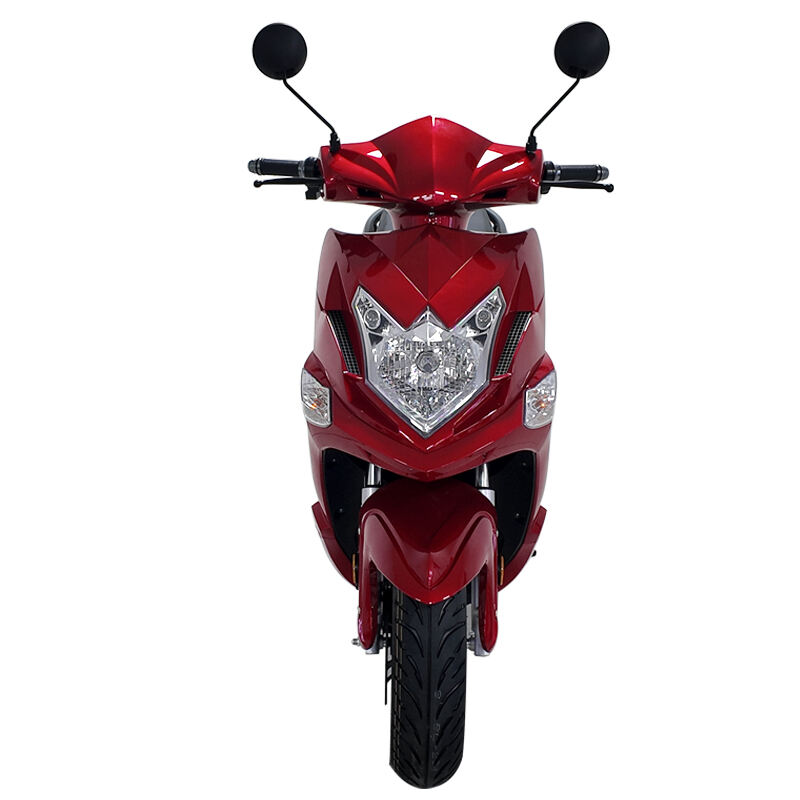The Rise of Electric Two-Wheeler Revolution in China
The landscape of urban transportation is undergoing a remarkable transformation, with China electric motorcycles leading the charge toward sustainable mobility solutions. These innovative vehicles have become a cornerstone of China's commitment to reducing carbon emissions while providing cost-effective transportation options for millions. The rapid adoption of electric two-wheelers in China represents not just a shift in consumer preference, but a comprehensive response to urban congestion, environmental concerns, and the growing demand for affordable transportation.
China's electric motorcycle industry has experienced exponential growth, with manufacturing capabilities and technological advancements positioning the country as a global leader in the sector. The combination of government support, infrastructure development, and consumer acceptance has created a perfect storm for the widespread adoption of these eco-friendly vehicles. As cities worldwide grapple with pollution and transportation challenges, China's electric motorcycle success story offers valuable insights into the future of sustainable urban mobility.
Technology and Innovation Driving the Market
Advanced Battery Systems and Range Improvements
At the heart of China electric motorcycles lies cutting-edge battery technology that continues to evolve. The latest lithium-ion batteries offer increased energy density, faster charging times, and longer lifespans. Manufacturers have made significant strides in extending range capabilities, with many models now capable of traveling over 100 kilometers on a single charge. This advancement directly addresses one of the primary concerns of potential adopters – range anxiety.
The integration of smart battery management systems ensures optimal performance and safety, while swappable battery solutions provide added convenience for riders. These technological improvements have made electric motorcycles increasingly practical for daily commuting and commercial applications.
Smart Features and Connectivity
Modern China electric motorcycles come equipped with sophisticated features that enhance the riding experience. GPS navigation, smartphone integration, and real-time vehicle diagnostics are becoming standard offerings. These smart capabilities allow riders to monitor battery status, plan routes efficiently, and stay connected while on the move.
The implementation of Internet of Things (IoT) technology enables predictive maintenance, theft prevention, and data-driven insights for both individual users and fleet operators. This level of connectivity represents a significant leap forward in two-wheeler transportation technology.
Economic Benefits and Cost Advantages
Lower Operating Expenses
One of the most compelling aspects of China electric motorcycles is their remarkably low operating costs. Compared to traditional gasoline-powered motorcycles, electric models offer significant savings in fuel and maintenance expenses. The simplicity of electric motors means fewer moving parts, reducing the frequency and cost of repairs.
Charging costs represent a fraction of traditional fuel expenses, particularly in regions with favorable electricity rates. This economic advantage makes electric motorcycles an attractive option for both individual consumers and businesses looking to optimize their transportation costs.
Government Incentives and Support
The Chinese government's commitment to electric mobility has resulted in numerous incentives and support programs. These include purchase subsidies, tax benefits, and preferential parking policies. Local authorities have also implemented regulations that favor electric two-wheelers, such as access to restricted areas and dedicated lanes.
These supportive policies have helped create a robust market ecosystem, driving down costs through economies of scale and encouraging continued innovation in the sector. The result is increasingly affordable vehicles that deliver excellent value for money.
Environmental Impact and Sustainability
Emissions Reduction and Air Quality
China electric motorcycles play a crucial role in reducing urban air pollution and greenhouse gas emissions. The shift from internal combustion engines to electric powertrains has already resulted in measurable improvements in air quality in many Chinese cities. Each electric motorcycle on the road represents a significant reduction in carbon dioxide emissions over its lifetime.
The environmental benefits extend beyond tailpipe emissions, as manufacturers increasingly adopt sustainable production practices and develop recycling programs for batteries and components. This holistic approach to sustainability ensures that the entire lifecycle of electric motorcycles contributes to environmental protection.
Resource Efficiency and Circular Economy
The production of China electric motorcycles emphasizes resource efficiency and recyclability. Manufacturers are implementing closed-loop systems for battery recycling, recovering valuable materials for reuse in new batteries. This approach not only reduces environmental impact but also helps control raw material costs.
The industry's focus on sustainable practices extends to packaging, manufacturing processes, and end-of-life vehicle management. These initiatives demonstrate the sector's commitment to environmental stewardship while maintaining affordability.
Future Prospects and Global Impact
Market Expansion and Export Opportunities
The success of China electric motorcycles in the domestic market has created strong foundations for international expansion. Chinese manufacturers are increasingly targeting export markets, offering competitive products that meet global quality and safety standards. The combination of advanced technology and affordable pricing positions these vehicles attractively for emerging markets seeking sustainable transportation solutions.
As urban centers worldwide face similar challenges of congestion and pollution, the demand for efficient, clean mobility solutions continues to grow. China's electric motorcycle industry is well-positioned to meet this global demand while contributing to sustainable transportation goals.
Continuous Innovation and Development
The future of China electric motorcycles looks promising, with ongoing research and development focused on further improvements in battery technology, vehicle performance, and user experience. Manufacturers are exploring new materials, advanced manufacturing techniques, and innovative designs to enhance both functionality and affordability.
The integration of artificial intelligence and autonomous features represents the next frontier in electric motorcycle development. These advancements will continue to reshape urban mobility while maintaining the core benefits of affordability and sustainability.
Frequently Asked Questions
What is the typical range of a China electric motorcycle?
Modern China electric motorcycles typically offer ranges between 60 to 150 kilometers on a single charge, depending on the model and battery capacity. Premium models can achieve even greater ranges, with some exceeding 200 kilometers under optimal conditions.
How long does it take to charge an electric motorcycle?
Charging times vary by model and charging method. Standard charging usually takes 4-6 hours for a full charge, while fast-charging options can reduce this to 1-2 hours. Many models also offer removable batteries for convenient charging at home or office.
Are China electric motorcycles reliable for daily use?
Yes, China electric motorcycles are designed for reliable daily operation. The simple electric drivetrain has fewer moving parts than traditional engines, reducing maintenance requirements. Most manufacturers offer warranties and after-sales support to ensure long-term reliability and customer satisfaction.
What makes China electric motorcycles more affordable than alternatives?
The affordability of China electric motorcycles stems from several factors, including large-scale production capabilities, advanced manufacturing processes, government incentives, and strong supply chain integration. Additionally, the lower operating and maintenance costs contribute to excellent long-term value.

